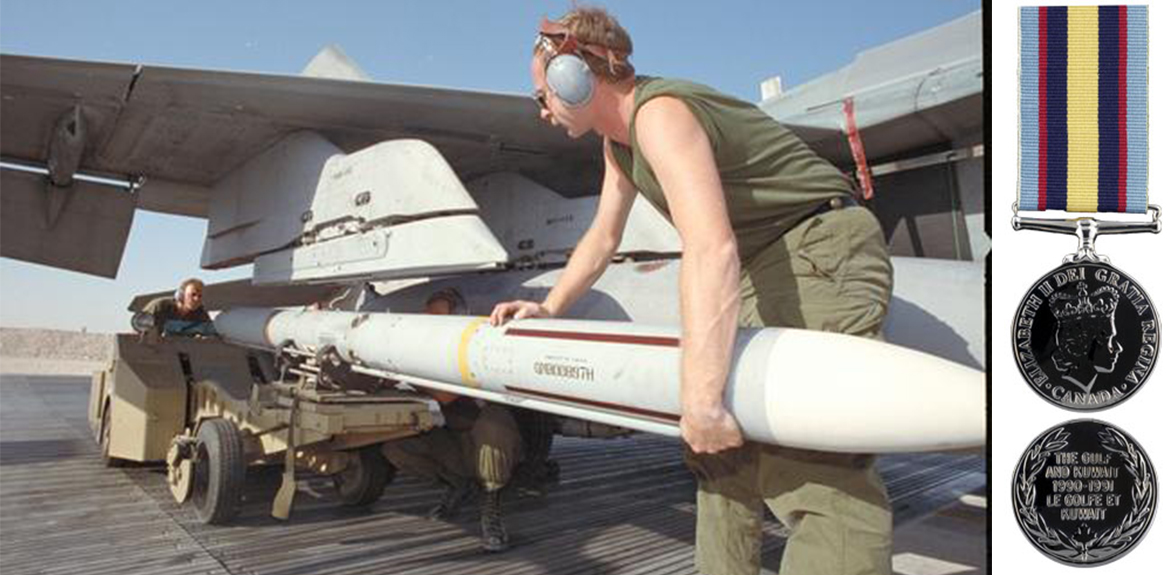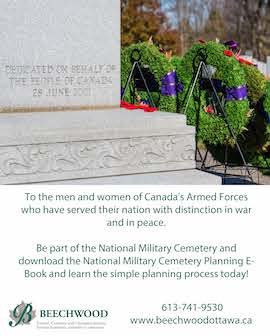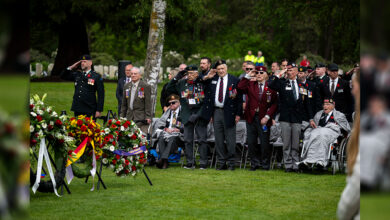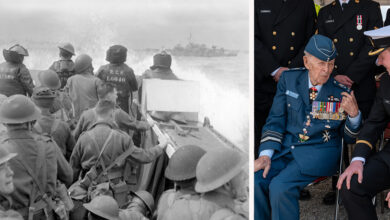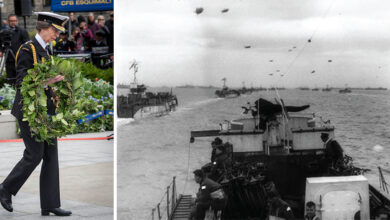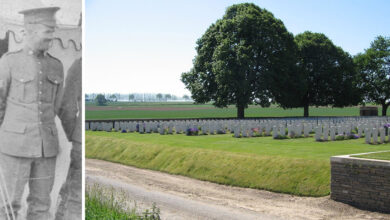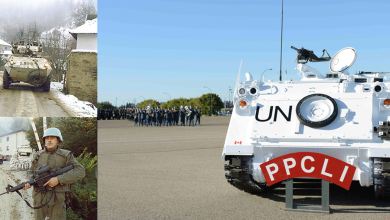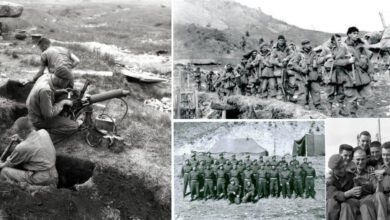History
Remembering the Gulf Invasion 30 years later
Above image: An air force weapons technician helps load a CF-18 warplane. December 16, 1990. Photo: Department of National Defence ISC90-5040
This month marked the 30th anniversary of the Gulf War, where more than 4,000 Canadian Armed Forces (CAF) members served in the Persian Gulf region.
The international conflict was triggered by Iraq’s invasion of Kuwait on August 2, 1990. The international community’s goal was to remove the invading forces of Iraq from Kuwait.
Fortunately, there were no Canadian fatalities during the war, but the harsh conditions affected military personnel physically and their mental health.
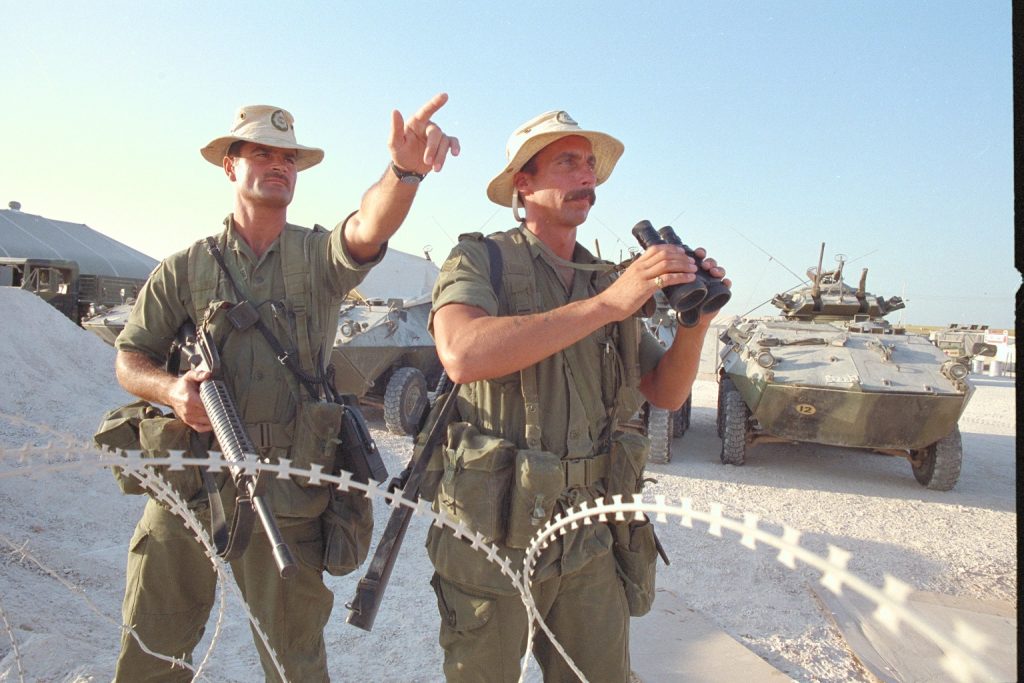
To mark the occasion, Lawrence MacAulay, Minister of Veterans Affairs and Associate Minister of National Defence stated, “More than 4,000 Canadians served in the Persian Gulf region from 1990-1991, playing a key role in the Gulf War.
“For many Canadian servicemen and women, it was the first time they deployed to a war zone, leaving the safety and security of their homes and communities to bring peace to another country.
“More than 4,000 Canadians served in the Persian Gulf region from 1990-1991, playing a key role in the Gulf War.”
He continued, “Canadian service personnel supported the air campaign, ground assault, and naval operations as well as transported troops and cargo. A Canadian field hospital cared for the wounded on both sides of the conflict. Let us never forget our Veterans’ extraordinary effort and sacrifices in answering the call to serve.”

On August 2, 1990, roughly 100,000 Iraqi soldiers invaded Kuwait. Within hours, the United Nations (UN) passed a resolution condemning the attacks. A Coalition of over 35 countries, led by the United States, came together in the largest union of forces since the Second World War.
The Coalition gave Iraq a deadline to withdraw its troops from Kuwait.
The UN gave authorization for the use of force against Iraq if it did not withdraw by January 15, 1991. Saddam refused to withdraw Iraqi troops from Kuwait.
On August 10, 1990, the Canadian government announced it would offer military support to the Coalition forces, under the codename Operation Friction. The key military contributions of the CAF were their warships and aircraft.
Not all Coalition countries provided military support. Some imposed economic sanctions on Iraq to put pressure on the Middle Eastern nation. Operation Desert Shield was the codename for the Coalition’s military build-up.
After Iraq refused to withdraw, the Coalition forces began a massive air campaign, Operation Desert Storm, in January of 1991.
The campaign destroyed Iraq’s air defenses before attacking its communications networks, government buildings, weapons plants, oil refineries, bridges, and roads.
CF-18 jet squadrons and 500 personnel operated out of bases in Qatar. Canadian jets bombed Iraqi land and sea targets as things intensified. It was the first time since the Korean War that Canadian air-to-surface attacks took place.
When the fighting began, Canadian warships co-ordinated the movements for the Coalition fleet.
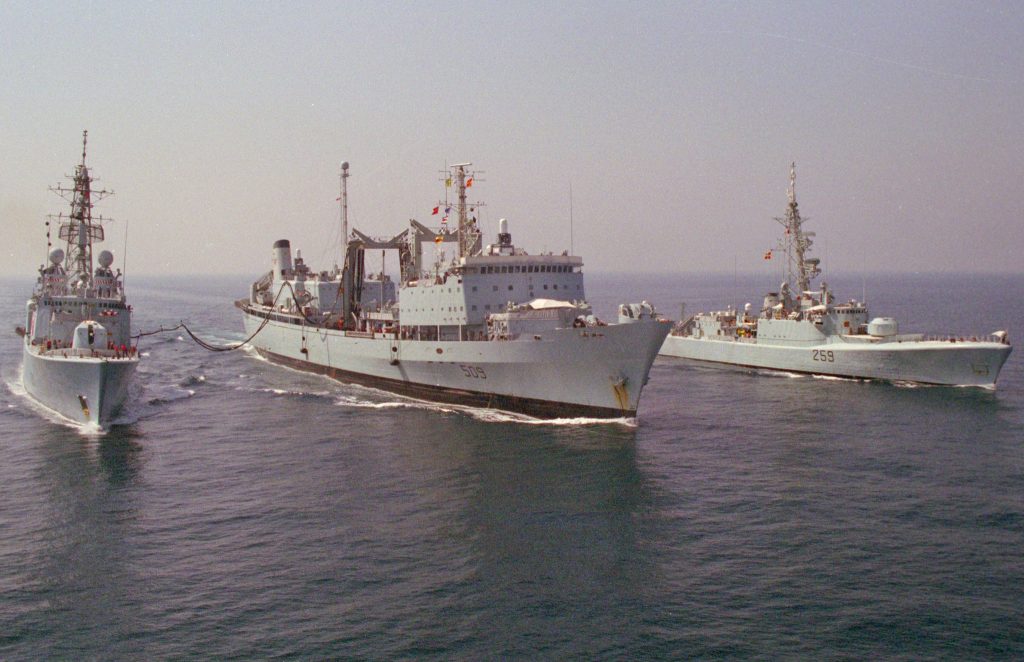
In addition, HMCS Terra Nova and HMCS Athabaskan protected Coalition ships that were farther away from the fight. HMCS Athabaskan embarked on a tense mission to help the USS Princeton, an American ship, after Iraqi mines off the coast of Kuwait damaged it. HMCS Protecteur transported supplies and refueled other vessels as well.
On February 24, 1991, Coalition forces began a ground combat campaign. The Coalition forces rapidly pushed Iraq from Kuwait, and as the Iraqis retreated, they set hundreds of Kuwaiti oil wells on fire.
After 100-hour ground combat, American President George H. W. Bush declared a ceasefire on February 28, 1991.
The Coalition had freed Kuwait and had defeated Iraq, but Saddam Hussein retained power. For 12 years, he controlled Iraq until the second Gulf War in 2003, where he was taken out of power.


